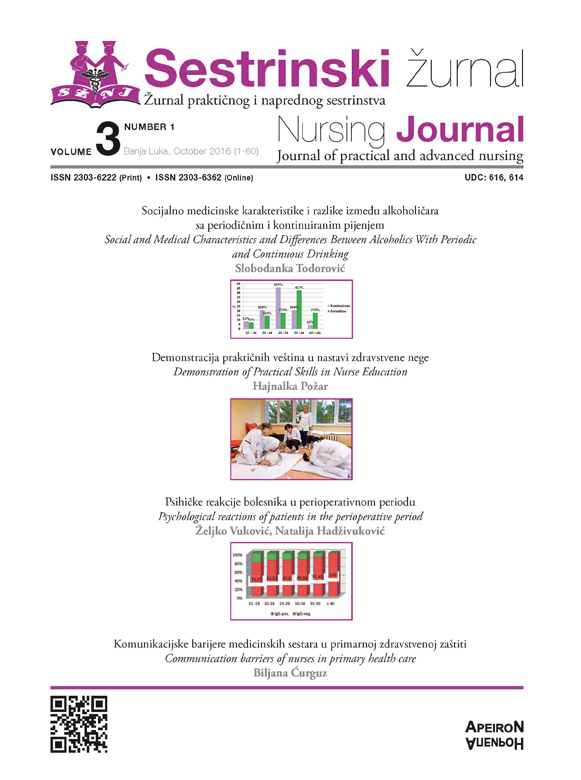Socijalno medicinske karakteristike i razlike između alkoholičara sa periodičnim i kontinuiranim pijenjem / Social and Medical Characteristics and Differences Between Alcoholics With Periodic and Continuous Drinking
DOI:
https://doi.org/10.7251/SEZ0116005TAbstract
According to the prevalence, causes and effects, addiction to alcohol is primarily a social problem (social - pathological phenomenon), a secondary medical, or psychiatric problem. Medicine, psychiatry belongs to that part of the alcohol abuse which has the characteristics of the disease, the disease of addiction. Suppresses the craving for alcohol and changed all mental functions, emotions, morality, accountability, value systems and encourages those traits that serve the satisfaction of desire - manipulative, passivity, impatience, recklessness, self-centeredness, hedonism.Dependence means the state of periodic or chronic intoxication with alcohol and is characterized by: a strong desire and need for acquiring and consuming alcohol, the tendency of increasing amounts of alcohol taken, physical and psychological dependence, adverse health consequences and distortions in social and professional functioning.
There are several different divisions of alcoholics, today in most of our institutions and the distribution of benefits by the way alcoholics drinking on periodic and continuous (daily), which is easier and more convenient to use. In order to evaluate whether social status affect the way drinking alcohol, we investigated the medical social characteristics and differences between alcoholics with periodic and continuous drinking.
The results of our study indicate that alcoholics consume alcohol periodically are mostly unmarried, living with friends more frequently in rural areas, are employed and have children. Family history is burdened by their addiction to alcohol and often come not treatment to avoid legal sanctions. Alcoholics with continuous drinking more frequently as a result of the facts of alcoholism are alcoholic polinuropatiju, in most cases, are divorced, live alone and have no children. They grew up with a father or both parents, in these alcoholics no existence, depending on the family or the father has, have trouble with the law as well as injuries in a drunken state. The higher percentage have komoriditet with depressive disorders.

